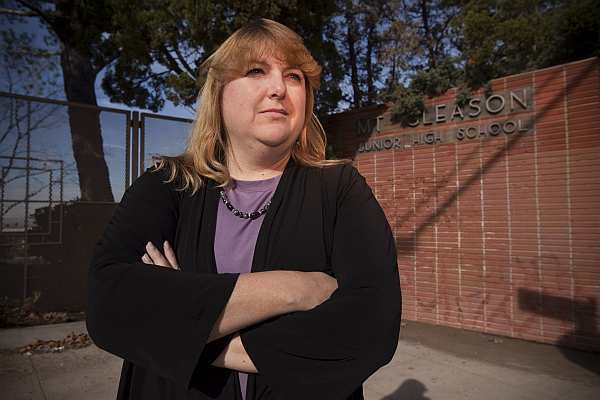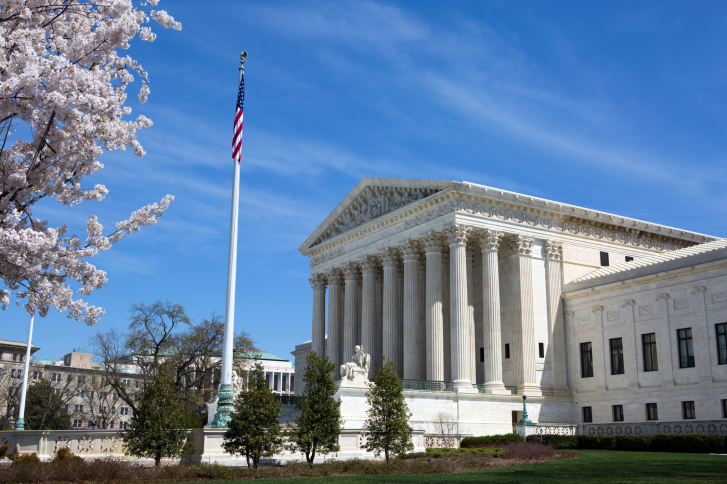California’s new “parent trigger” law is getting its first test from a parent in a Los Angeles suburb.
Lydia Grant, a 45-year-old mother of three and member of the Sunland-Tujunga Neighborhood Council, says she’s spent 10 years trying to persuade the Los Angeles Unified School District to improve Mt. Gleason Middle School, to no avail. Grant says the parent trigger law is her community’s “last, best hope.”
Under the law, if 50.1 percent of qualifying parents sign a petition, the school must initiate one of four turnaround plans prescribed by the federal government.
In August, Grant and a small group of parents began circulating petitions to “trigger” Mt. Gleason to use a transformation model that would replace the school’s top administration. School Reform News recently spoke with Grant about her efforts. A podcast of the complete interview is available at http://www.heartland.org/bin/media/podcasts/Education/srn9210.mp3.
School Reform News: What are you trying to achieve with the new parent trigger law?
Lydia Grant: I had a child at the middle school, and his education was not that great. I ended up having to pull him out and put him in home schooling. Later, he did return to high school. The problem was, he did not really get the education he deserved.… There were a lot of things that were cropping up that in my opinion made the school unsafe.… Over the last three years the problems have escalated to the point where action had to be taken to protect the kids.
SRN: How does Mt. Gleason Middle School qualify for the parent trigger?
LG: There [are] only really two qualifications for a school to be eligible for the parent trigger. One of those is the school [ not making sufficient] improvement under No Child Left Behind. It means the school hasn’t met the criteria that the federal government has set for it. Our school has been on program improvement since 1997. The other qualification is the school has to have less than 800 API (Annual Performance Index) points, and our school is at 744.
SRN: So the school qualifies for the parent trigger academically. But the school is failing kids in other ways that concern parents too. Is that correct?
LG: Yes. Many of the parents in the community feel even though our teachers are extremely hard working and they have increased the test scores—the test scores have gone up—they’re trying to do it in an environment that’s unsafe. If a child has to worry about being bullied or attacked, [his] mind is not set on learning. So it’s our belief as parents that the environment on the campus is not conducive to learning and that is what’s holding test scores down.
SRN: When the legislation was being debated in December and January, opponents—mostly the California Teachers Association—said this was a “lynch mob” law. Did you ever imagine yourself leading a lynch mob? Or what do you see yourself doing in this effort?
LG: In my situation, in our school’s situation, anybody who would think that trying to protect the lives of children would [be] a lynch mob mentality, … first of all, it shames me they would even be involved in education. Truly. Because that is just such an inappropriate statement.
Parents have been pushed down long enough. This was a parent empowerment [bill] so that parents could be involved in their children’s education.
SRN: The state board of education in July passed some emergency regulations clarifying what the parent trigger law does. There was some pushback in August from the state office that oversees regulations. You had an opportunity to testify to the state board of education in July and August. What did you tell them?
LG: [Opponents] were trying to say, you know, the schools have been failing for so long that it’s just not an emergency any longer.
Every day a child is not getting an education creates a future for them that is going to be bleak. So it is an emergency. And in our particular case, we’re trying to protect the lives of children, so it was definitely an emergency.
SRN: How is your signature-gathering going?
LG: We’re still in the process. We got some petitions done up. We started collecting signatures. We’ve held back a little bit since I did the first couple of days of signature collection because I felt the petition that we had done could be a little clearer, so they’re being redone.…
We have to state on the petition which [turnaround option] we’ve chosen. And it was on the petition, but I felt it should be much bigger, that the name of the school that was being triggered should be big so that people were more aware when they looked at it what exactly it meant instantly, without having to read mice type. So we’ve just asked for a much brighter, easier-to-read petition.
… This will probably be the first trigger, so we have to set the example and be very transparent. And we want to make sure that along the way it’s brought to our attention if something should be better. We really appreciate the feedback.
Ben Boychuk ([email protected]) is managing editor of School Reform News.





